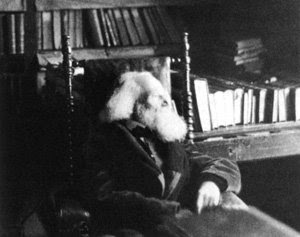
Charlotte Perkins Gilman was a very interesting woman. Her life was unique and her work influential. Her views on life and society were extreme and rather progressive. Gilman was born on July 3, 1860 in Hartford, Connecticut and she spent most of her life in Rhode Island. In 1884 she married Charles Walter Stetson and they had a daughter but Gilman was not up to living the life of housewife. Her attempt at doing so sent her into a deep depression of which she only started to come out of when she left her husband. Gilman moved to California with her daughter. Here Gilman became active in several feminist and reformist organizations such as The Pacific Coast Woman's Press Association, the Woman's Alliance, the Economic Club, the Ebell Society, the Parents Association, and the State Council of Women. Gilman’s husband later remarried with a friend of hers, with Gilman’s blessing of course. She sent her daughter to live with them which brought on her characterization as “an unnatural mother.” She continued her work and later remarried.
Gilman wrote a series of utopian works that were originally published in the journal The Forerunner (1909-1916), which she wrote, edited, and published all by herself. Moving the Mountain, Herland, and With Her in Ourland are works that show Gilman’s feelings about the condition of women and her proposed solution. In all three works Gilman continuously mentions that the new advanced societies were a result of the awakening of women. Women can reach their full human potential and make the world a better place only if they are allowed to fend for themselves. The works were personal on different levels. They expressed her beliefs and there are some instances where little events in the works parallel Gilman’s. Perhaps these were mere coincidences but her works were her outlet so its possible she thought her way of life was ideal.
In reading several of her works of fiction I found that Gilman had some very interesting views on the world and she was very successful in her intent to get people thinking about the world. It was strange to read a utopian work where one of the new radical ideas was that a woman was able to have a career and a family, but one has to remember that they were written a very long time ago.
It is easy for us to understand and accept all these accomplishments of a woman, but they are so much more meaningful because Gilman accomplished all of this at a time when women were not even allowed to vote. Women were just empowering themselves and Gilman is an example of all that women were capable of and more.







